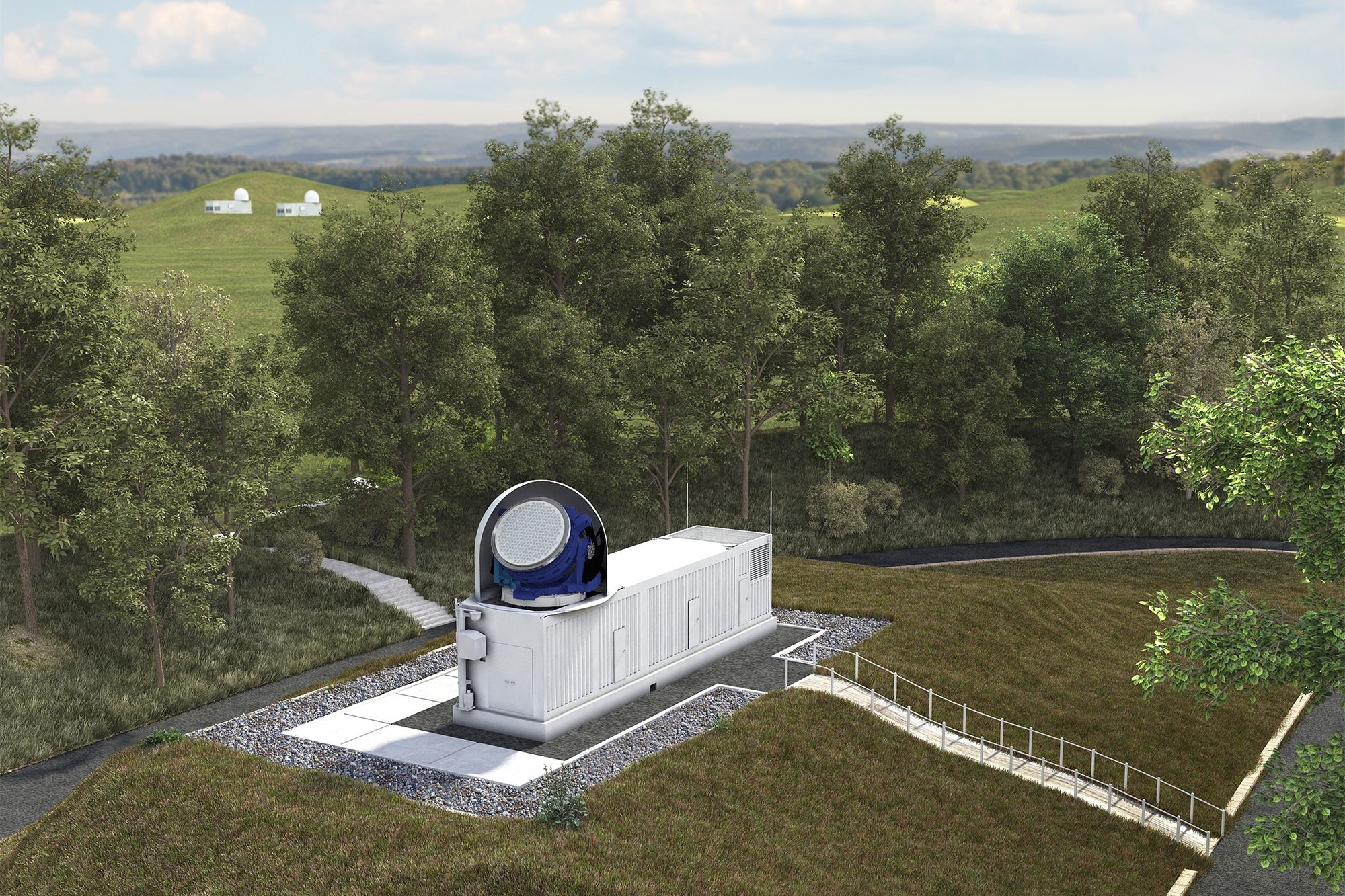Radar networks in practice: GESTRA meets EUSST
Networks consisting of several radar units are far superior to individual radar systems. This has already been shown in a study by Fraunhofer FHR and will now be demonstrated in practice by the GESTRA EUSST project. To this end, the GESTRA space observation radar is to be coupled with a newly developed receiver called EUSST. In the future, the two systems will be spatially separated but networked to provide more precise information.

Communication, navigation, weather forecasting, television – all of these rely on satellites. If one of them fails, this can have unforeseen consequences. But such a failure is by no means improbable: After all, pieces of scrap of all kinds are buzzing around in the low-Earth orbit. If they hit a satellite, the satellite may be destroyed by the force of the impact. Satellite operators therefore have a great interest in detecting scrap particles in orbit and determining their trajectories – and triggering the satellite to execute an evasive maneuver in the event of imminent danger. This can be done by the GESTRA radar system, which Fraunhofer FHR has been building since 2014 and is currently completing. GESTRA reliably detects larger pieces of scrap. However, the system’s current resolution has its limits. Therefore, even during its construction period, the consideration was: How can GESTRA’s resolution be improved so that smaller "projectiles" can also be reliably detected? As a study by Fraunhofer FHR showed (see article on page 37), the answer lies in radar networks.
Practical test for radar networks
The GESTRA EUSST project, which started at the beginning of 2021, now presents the practical test: How can radar systems be interconnected in real life? The project was commissioned by DLR. The first part of the project involves building the radar system called EUSST. The second part comprises implementing the "operating system" that allows GESTRA and EUSST to work together. Finally, by combining both systems, a functional radar sensor with significantly improved resolution as well as more precise situation and orbit estimation should be produced at the end of the project. The design of EUSST is similar to that of GESTRA, but with the addition of various components which are necessary for networked operation. Also, unlike GESTRA, EUSST is intended to be a pure receiver with no transmitting unit. GESTRA is also being optimized for collaboration: In particular, the software and algorithms need to be adapted for networked operation. Another development aspect is that the time synchronization of both radar systems is required to be highly stable. This is achieved using long-term stable atomic clocks.